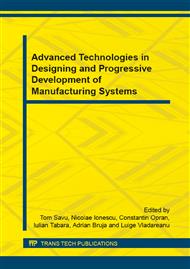p.677
p.683
p.689
p.695
p.701
p.707
p.715
p.721
p.727
The Academic – Industry Cooperation and the (Long) Road from Strategy to Competitiveness
Abstract:
The issue of competitiveness is analyzed in terms of macro and microeconomic, based on two studies - one multinational (12 selected countries), one national (505 selected companies), focusing on the correlation between innovation, competitiveness and economic growth, considered as a guarantee to ensure the prosperity of a nation by transforming efficiency the available resources. The recovery of some historical gaps requires coherent national strategies to highlight competitive advantages, the cooperation within the academic-industry-government triad being a vital engine for creating, developing and disseminating new knowledge and skills useful for all society. The academic-industry relations are addressed through the common major interests, such as the absorption of technology and competitiveness, the training of the staff and the development of the entrepreneurial skills, the R & D activities and innovation, the partnerships and the funding sources, being highlighted the collaboration and technological change barriers , but also the concrete proposals for strengthen the bilateral connections, implicitly the national innovation system (NIS).
Info:
Periodical:
Pages:
701-706
Citation:
Online since:
May 2015
Authors:
Price:
Сopyright:
© 2015 Trans Tech Publications Ltd. All Rights Reserved
Share:
Citation:


